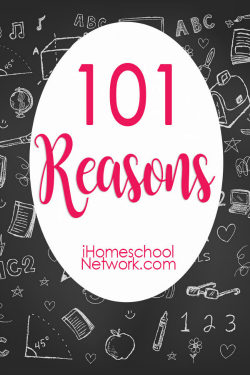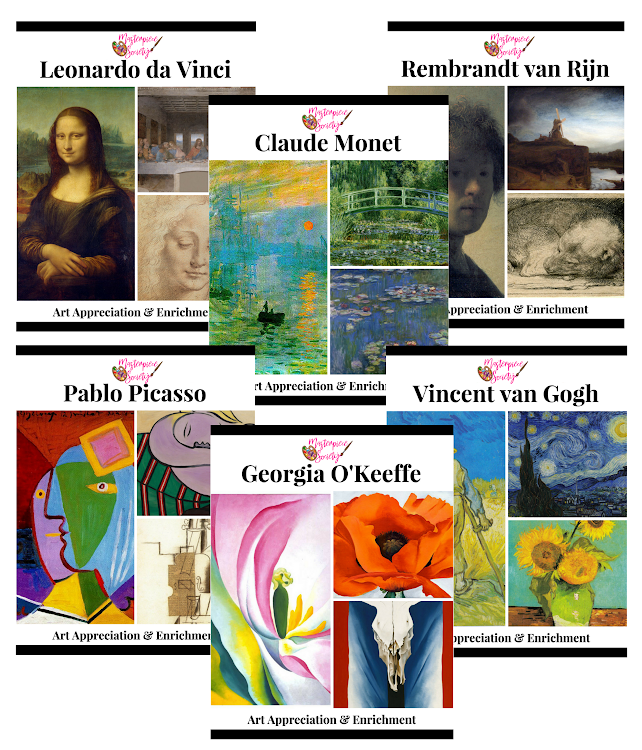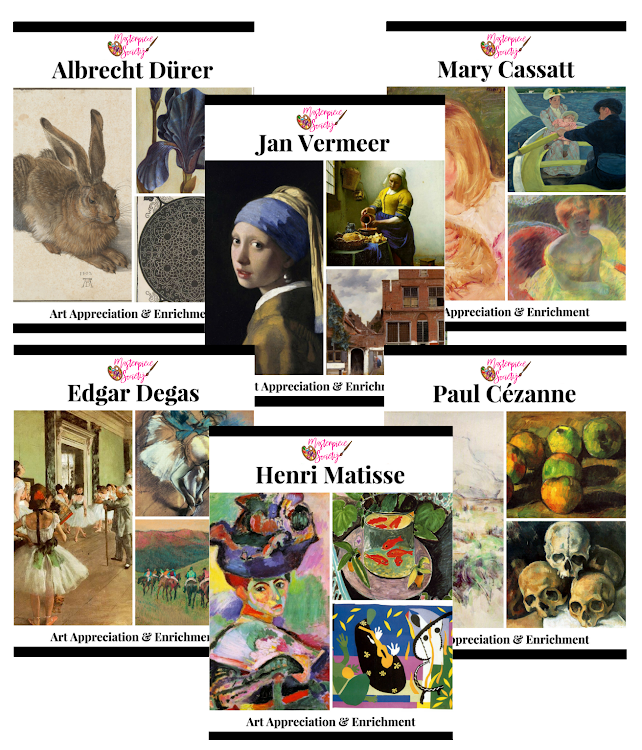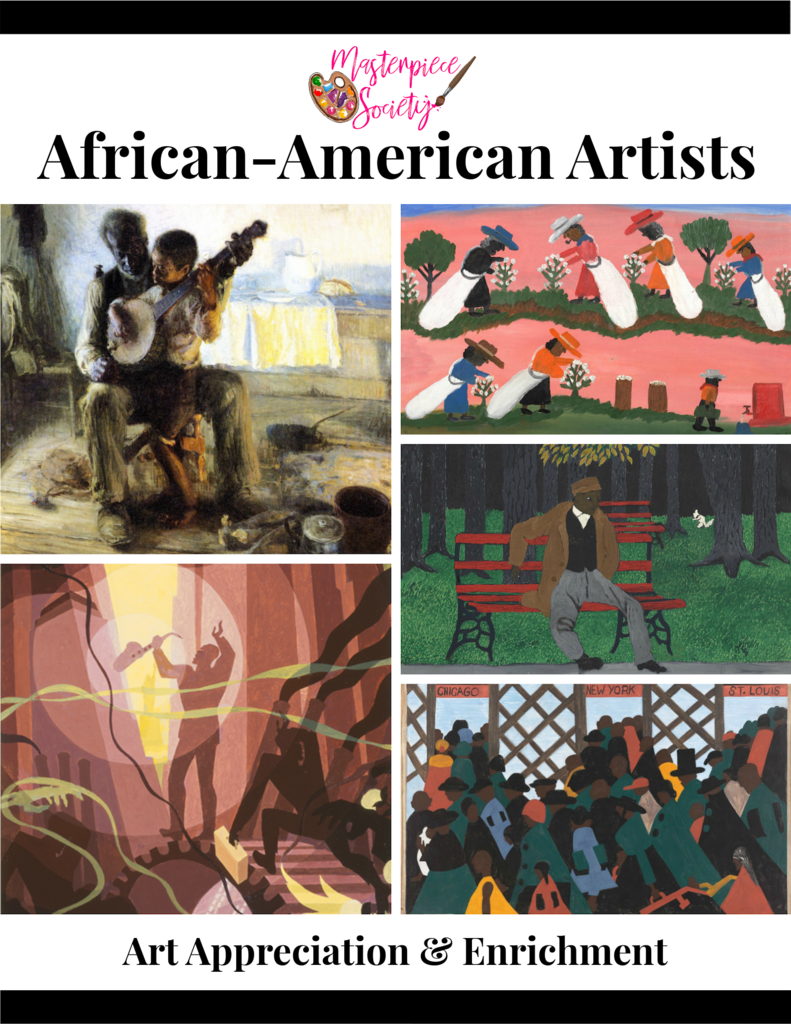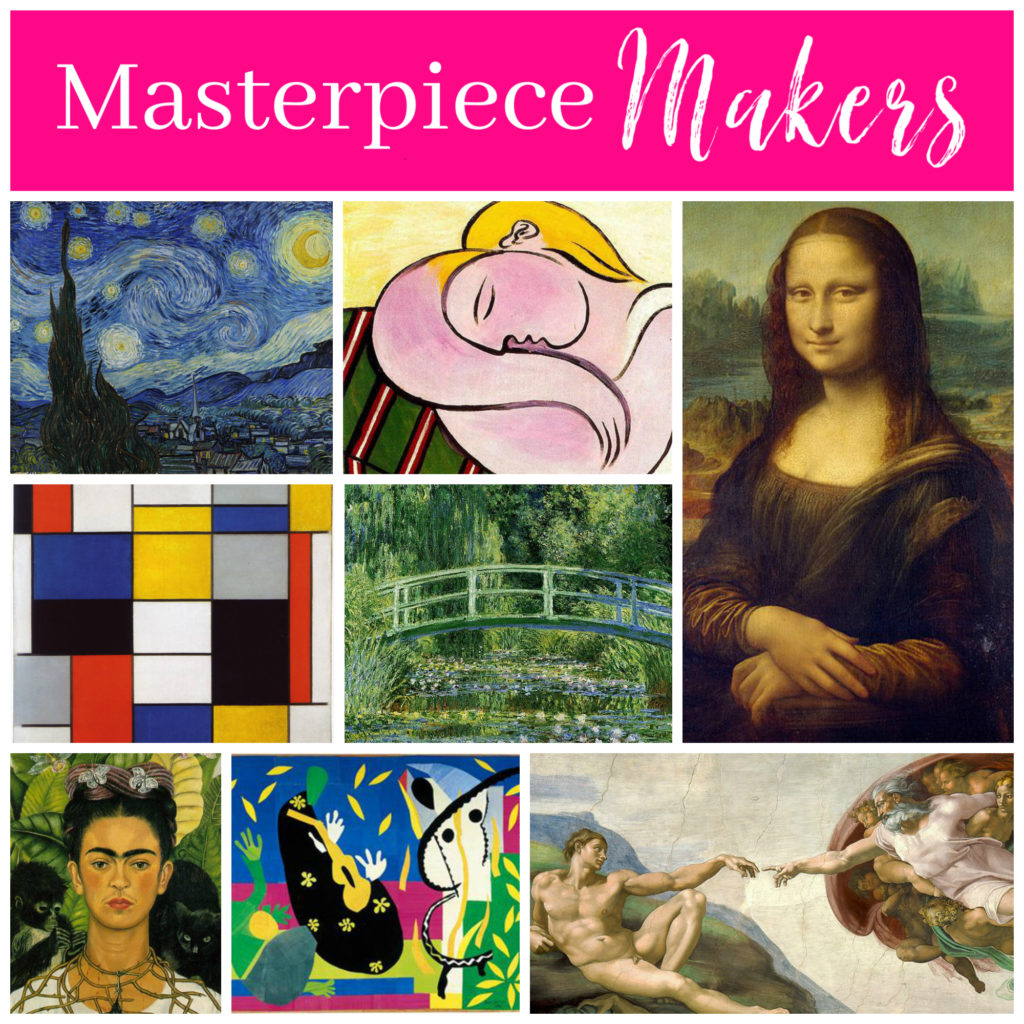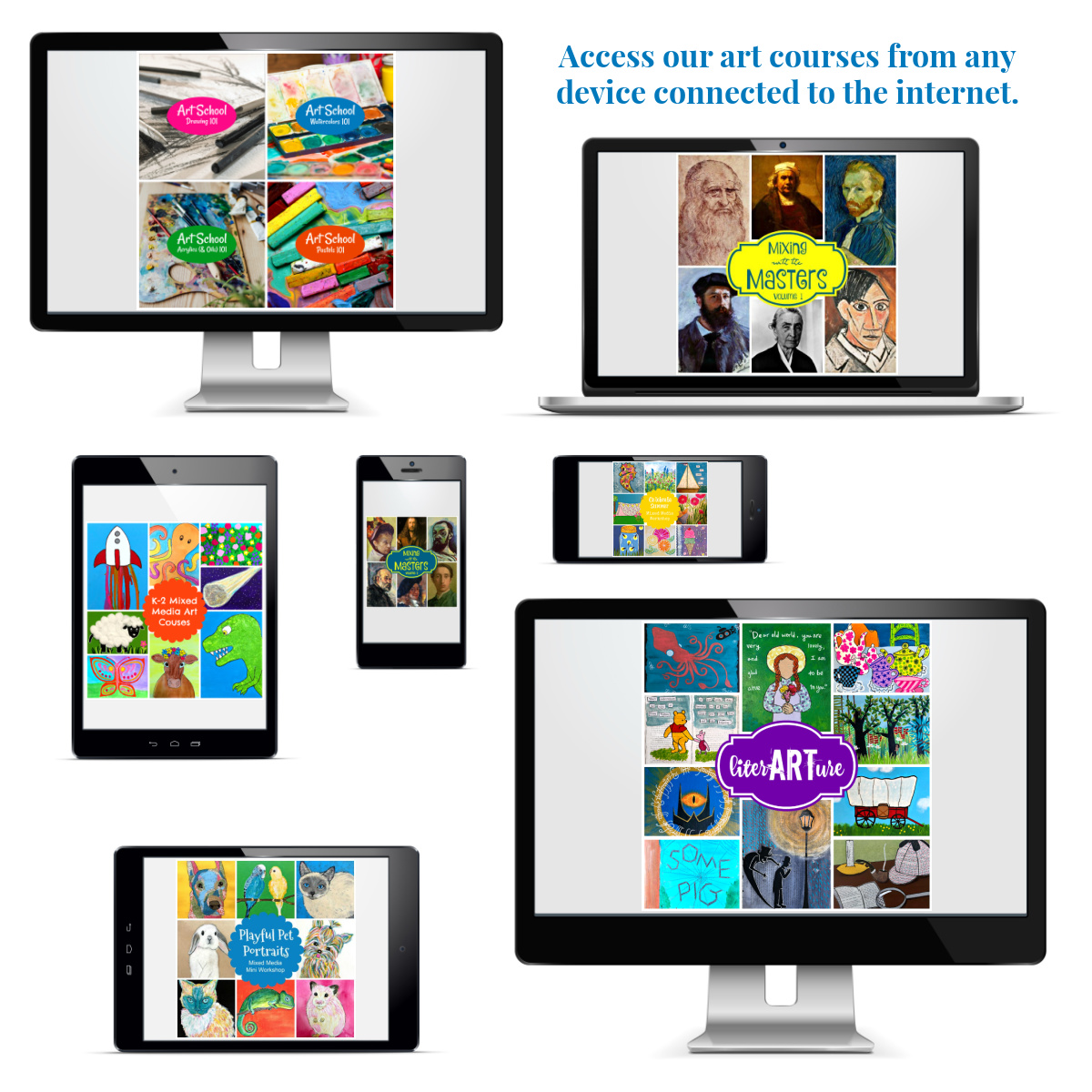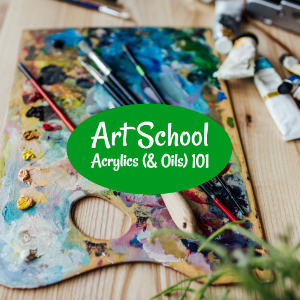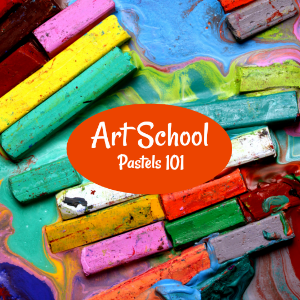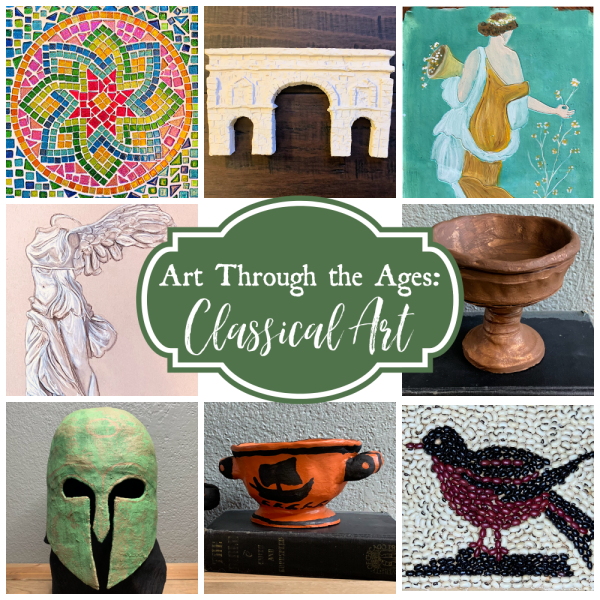Think you don’t need to add art to your homeschool? Here are 101 reasons to incorporate fine arts into your homeschool today.

It is a sad reality that “Fine Arts” is one of the first subjects to get dropped whenever our homeschool schedules get out of whack. But this shouldn’t be the case. The arts are vitally important on so many different levels. Why should you make sure to incorporate fine arts into your homeschool? Below are 101 reasons…
101 Reasons to Incorporate Fine Arts into Your Homeschool
- “The purpose of art is washing the dust of daily life off our souls.” ~ Pablo Picasso
- Creating art promotes peaceful mindsets.
- Studying art allows one to explore life from the perspective of others.
- Art teaches us that perfectionism isn’t attainable, and that beauty doesn’t require perfection.
- According to research, creating art can improve brain function.
- Art journals allow children an opportunity to explore their thoughts and ideas in a visual way without the pressure of getting it right.
- Brain scans reveal increased levels of functional connectivity among those who participated in an hands-on art class.
- Soft chalk pastels are easy to use for any age level from Pre-K to adult this medium makes it easy for anyone to explore their own artistic creativity.
- You don’t need expensive supplies to be a great artist, you just need your imagination.
- You can teach with the great Bob Ross, whose videos are available on Amazon Prime.
- You can paint with Bob Ross and follow along with these BINGO cards.
- “Art is born of the observation and investigation of nature.” ~ Cicero
- The Art Book: Big Ideas Simply Explained is a great general guide that can be used as part of your curriculum.
- The Annotated Mona Lisa: A Crash Course in Art History is a great book that can be used as the core of a high school art requirement.
- Art: A Visual History takes you through the history of more than 650 artists.
- Art That Changed the World is a beautiful and informative book that can be used as part of your homeschool curriculum.
- Masterpiece Society Art Appreciation is an “open and go” curriculum for homeschool, developed with the busy mom in mind – no prep time or other materials necessary – photographs of each painting, lessons, kid-friendly video links, art templates, and notebooking pages are all included in each volume.
- Creativity is intelligence having fun.
- Creativity is an important aspect of the learning process and teaching fine arts is a way to stretch our creative muscles.
- And there are LOTS of benefits of creativity.
- Unlike math and science, art doesn’t have to make sense to everyone.
- Unlike test scores and essays, the creative medium cannot be judged.
- “Art is man’s constant effort to create for himself a different order of reality from that which is given to him.” ~ Chinua Achebe
- With art, we can embrace our geekiness and create things to honor our fandoms.
- You don’t have to come up with new ideas for an art project when you have an ALL-ACCESS pass to every Masterpiece Society art course and lesson for kids and teens via the Masterpiece Society Studio.
- Seeing the art projects created by our children can inspire us to delve into art ourselves.
- Artistic people are usually more unique and open-minded.
- Without art and music, the world would be less beautiful.
- Creativity with common place mediums can turn the ordinary in the extraordinary.
- A piece of art can touch someone’s heart so strongly it can change their life.
- Art and music are amazing forms of self-expression.
- Fine arts projects can help us as parents to get to know our childrens’ innermost thoughts and emotions.
- Art and music can help us express emotions and thought when words fail.
- “You can’t use up creativity. The more you use, the more you have.” ~ Maya Angelou
- Art and music can help a person of any age deal with life’s struggles.
- Art and music are a form of hands-on learning.
- Having the ability to express their creativity will keep energetic or fidgety kids from going bonkers (or driving you bonkers). 😉
- Art journaling or notebooking in homeschool is a wonderful alternative to writing reports.
- The use of supplies such as paint brushes, scissors, and markers helps young children to develop fine motor skills.
- Theater and dance classes give homeschool kids a socialization outlet.
- Sculpting with clay can help to develop visual-spatial skills.
- Creative activities are some of the building blocks of child development.
- “Everybody is talented because everybody who is human has something to express.” ~ Brenda Ueland
- Appreciating visual aesthetics can bring joy to a child’s (and your) life.
- Music can bring a subject, like history, to life.
- Dance and movement classes can aid a child’s gross motor development.
- Learning to draw shapes will help a child in later math classes, like geometry.
- Americans for the Arts reports that art education enhances problem-solving and critical-thinking skills.
- Experimenting with new mediums and techniques is a form of STEM.
- Through art, a student can expand their skills of innovation and invention.
- A report by Americans for the Arts reveals that students who regularly engage with fine arts are four times more likely to be recognized for academic achievement.
- “Art has the role in education of helping children become like themselves instead of more like everyone else.” ~ Sydney Gurewitz Clemens
- Combining art and music together makes each subject more enjoyable.
- There are plenty of non-artsy fine arts for uncreative minds to delve into, like leather-crafting and wood burning.
- A talented artist can win full-ride scholarships to college.
- Therapists believe that art allows children to process scary emotions in a safe way.
- Art is a source of beauty and expression.
- Art can employ all five of the senses, sight, smell, touch, sound, and even taste.
- Fine arts can create more neural connections.
- “Art does not imitate, but interpret.” ~ Giuseppe Mazzini
- Imagination and creativity (which begin with the arts) help us explore our meaning in life and discover God’s purpose for each of us.
- Art can help people find common ground and interests.
- Creating art can be relaxing.
- Art allows you freedom of expression without language.
- Art can be admired and adored regardless of nation or culture.
- The arts can help students and adults alike develop their skills in new and different ways.
- A person’s (including children) self-talk and self-image is vitally important to their creativity.
- Art isn’t just about paintings, sketches, and music, it encompasses dance, theater and poetry as well.
- Developing artistic skills can lead to fruitful and successful careers.
- Studies show that lessons in the fine arts help to improve academic performance overall.
- Through artistic progress a child’s self-confidence will improve.
- “Art doesn’t have to be pretty. It has to be meaningful.” ~ Duane Hanson
- Art education teaches children how to interpret, form opinions, and think critically.
- Students can learn patience through creativity.
- Teens can learn that perseverance pays off.
- Children can learn that they have something valuable to contribute to the world.
- Anyone can create something unique whether visually, musically, or dramatically. Art is a level playing field.
- Fine art studies can inspire deeper thinking.
- Artistic studies engage multiple parts of the brain.
- Fine arts teach how to make qualitative comparisons.
- Artistic studies help teach that a problem can have many solutions.
- “Art enables us to find ourselves and lose ourselves at the same time.” ~ Thomas Merton
- Art teaches us that what we CAN know is more than simply written/spoken words or numbers.
- With art, cognition isn’t limited by language.
- Listening to classical music stimulates brain activity.
- Letting children express themselves through art allows them to say what is too difficult to speak.
- Did you know that art can be tasted? Yes! Cooking and Baking can be forms of artistic expression. So, you can taste creative art in the form of food.
- For some, creativity may start with storytelling. So allow your children to explore their own creative thinking in written words.
- Have a kid that prefers all things STEM? You can totally teach fine arts through STEM. Video, digital animation, and film are all based in both the arts and STEM, just to name a few fields of study.
- Photography is another awesome way to let students study artistic creativity. Some of the most famous artists were photographers, such as: Ansel Adams, Dorothea Lange, and Anny Leibovitz.
- “Art inspires, produces an unwillingness to settle for what we have, and a desire for something better. It is the product and producer of creative activity, change; it is essential for continuous development.” ~ Russell L. Ackoff
- Great art is the foundation of great architecture.
- Architecture combines artistic expression with engineering and technology.
- Having an eye for art allows one to look at nature and see beauty in even the tiniest of creatures, plants, and patterns.
- Teaching your children that creativity comes from God allows them to use their creativity to draw upon that spark of divine inspiration within them to create marvelous things.
- “I found I could say things with color and shapes that I couldn’t say any other way – things I had no words for.” ~ Georgia O’Keeffe
- Allowing your children to explore their talents and passions will help them find joy in their lives.
- Giving your child the freedom to hone their creative skills can also provide them with experience in areas of project management, communication, time management, sourcing resources, and even budgeting – not to mention their artistry.
- Artistic practice encourages and builds good habits.
- Learning an art form can take the fear out of experimentation of any new study.
- “Art is a collaboration between God and the artist, and the less the artist does the better.” ~ Andre Gide
Want a FREE art lesson to stimulate creativity in your child or teen
(or even you)? Just click on the image below:
Want to read more 101 Reasons… posts from my fellow bloggers at iHomeschool Network? Click here.



